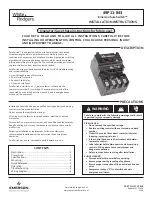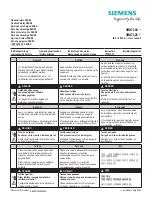
18
by the ammeter. The measurements can, for
instance, be performed at the rated current of
the relay.
Checking the operate time t>
Set the test current at 2 x the set start current of
stage I
0
>. The clock is started by closing the S1
switch and stopped via contact 65-66, when
output relay A picks up.
The operation of output relay C is indicated
with indicator L4.
When the relay starts the LED indicator I
0
> in
the right corner of the front panel is lit with
yellow colour. When the low-set stage operates
the LED indicator turns red.
Checking the blocking function
Set switches 4 and 5 of switchgroup SGB and
switch SGR/1 in position 1 (ON).
Apply control voltage to the external control
input of the relay by closing switch S2. The
control voltage should be of the same level as the
auxiliary voltage of the relay. Increase the test
current slowly until the low-set stage starts.
After the set operate time the low-set stage is not
allowed to operate as long as the blocking input
is energized.
Set the switches of the SGR switchgroup as
follows before starting the test:
Switch
Position
1
1
2
0
3
0
4
0
5
0
6
0
7
1
8
0
The following relay functions are obtained:
Output rel. Function
(terminals)
A (65-66)
Trip signal of the I
0
> stage
B (68-69)
(Trip signal of the I
0
>> stage)
C (80-81)
Signal on tripping of the I
0
>
stage (ind. L4)
D (77-78)
Not in use
E (71-72)
Self-supervision alarm (ind. L1)
F (74-75)
Start signal of the I
0
> stage
(ind. L2)
Checking the start function
Apply test voltage to terminals 25-26 or 25-27
depending on the used energizing input. Close
switch S1 and increase the test current slowly
until the low-set stage starts and indicator L2 is
lit. Read the start current value from the am-
meter.
Checking the
matching
transformers
Apply pure sine-formed test current to the relay
and compare the current value read from the
display of the relay with the current value shown
Checking the low-set
stage I
0
>
















































